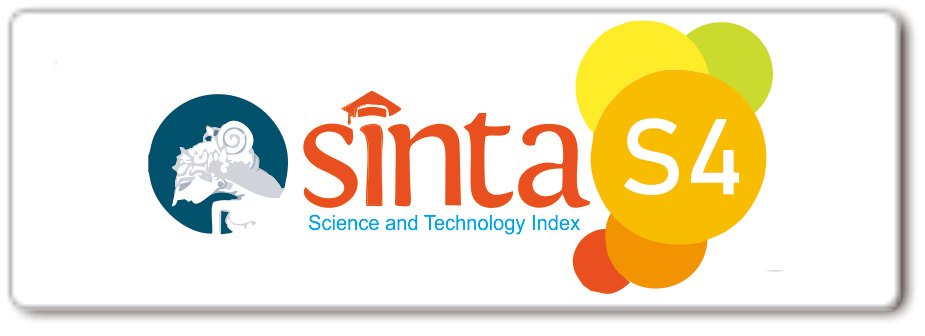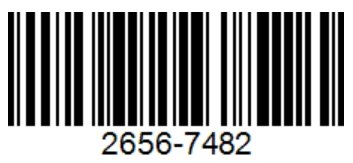TES TZANCK DI BIDANG DERMATOLOGI DAN VENEREOLOGI
DOI:
https://doi.org/10.33820/mdvi.v46i1.55Abstract
Tes Tzanck merupakan prosedur sitologi sederhana yang praktis, mudah dilakukan, ekonomis, kurang traumatik dan hasil cepat. Arnault Tzanck pada tahun 1947 pertama kali melakukan metode ini untuk menemukan sel akantolitik pada lesi kulit vesikobulosa, kemudian berkembang dan terbukti bermanfaat membantu diagnosis untuk menegakkan atau menyingkirkan berbagai penyakit kulit, antara lain penyakit infeksi (herpes simpleks dan varisela zoster), autoimun bulosa (terutama Pemfigus vulgaris), dermatitis spongiosis (dermatitis kontak iritan dan dermatitis kontak alergi), tumor kulit (karsinoma sel basal, karsinoma sel skuamosa dan penyakit paget) serta genodermatosis. Sebagian besar sensitivitas dan spesifisitas baik dan dipengaruhi oleh jenis penyakit dan awitan lesi kulit. Prosedur pengambilan spesimen berbeda-beda bergantung pada jenis lesi. Bahan apusan difiksasi dan diwarnai, paling sering dengan pewarnaan Giemsa. Tinjauan pustaka ini membahas peran pemeriksaan sitologi tes Tzanck, berbagai pola karakteristik sitologi pada penyakit yang sering dijumpai, serta beberapa petunjuk teknis pengambilan sampel pada setiap jenis lesi dan fiksasi serta pewarnaan secara benar.
Kata kunci: Tes Tzanck, sitologi, sel akantolitik
Downloads
References
2. Gupta LK, Singhi MK. Tzanck smear: A useful diagnostic tool. Indian J Dermatol Venereol Leprol. 2005;71:295-9.
3. Ruocco E, Brunetti G, Del Vecchio M, Ruocco V. The practical use of cytology for diagnosis in dermatology. J Eur Acad Dermatol Venereol. 2011;25:125-9.
4. Shaheen JA, Haroon TS, Mahmood T, Hussain I. Evaluation of sensitivity of Tzanck smear in pemphigus. JPMA. 2003;13:175-8.
5. Heera KP, Anoop TV, Ajaya Kumar S, Robins K, Rajiv S. The significance of tzanck smear in evaluation of vesiculobullous skin lesions in correlation with clinical diagnosis - a cross sectional study. IJCMR. 2017;4:337-40.
6. Rai R, Bhardwaj ASV. Tissue fixatives: A review. Int J Pharm Drug Anal. 2016;4:183-7.
7. Barcia JJ. The Giemsa stain: Its history and applications. Int J Surg Pathol. 2007;15:292-6.
8. Yaeen A, Ahmad QM, Farhana A, Shah P, Hassan I. Diagnostic value of Tzanck smear in various erosive, vesicular, and bullous skin lesions. Indian Dermatol Online J. 2015;6:381-6.
9. Chantziantoniou N, Donnelly AD, Mukherjee M, Boon ME, Austin RM. Inception and Development of the Papanicolaou Stain Method. Acta Cytol. 2017;61:266-80.
10. Al-Abbadi MA. Basics of cytology. Avicenna J Med. 2011;1:18-28.
11. Aithal V, Kini U, Jayaseelan E. Role of direct immunofluorescence on Tzanck smears in pemphigus vulgaris. Diagn Cytopathol. 2007;35:403-7.
12. Durdu M, Baba M, Seckin D. The value of Tzanck smear test in diagnosis of erosive, vesicular, bullous, and pustular skin lesions. J Am Acad Dermatol. 2008;59:958-64.
13. Ozcan A, Senol M, Saglam H, Seyhan M, Durmaz R, Aktas E, et al. Comparison of the Tzanck test and polymerase chain reaction in the diagnosis of cutaneous herpes simplex and varicella zoster virus infections. Int J Dermatol. 2007;46:1177-9.
14. Oranje AP, Folkers E, Choufoer-Habova J, Duivenvoorden JN. Diagnostic value of Tzanck smear in herpetic and non-herpetic vesicular and bullous skin disorders in pediatric practice. Acta Derm Venereol. 1986;66:127-33.
15. Khalbuss WE, Michelow P, Benedict C, Walid E, Monaco SE, Pantanowitzet L. Cytomorphology of unusual infectious entities in the Pap test. Cytojournal. 2012;9:15.
16. Tyring SK. Molluscum contagiosum: The importance of early diagnosis and treatment. Am J Obstet Gynecol. 2003;189:S12-6.
17. Scherer P, Fries J, Mischkowski RA, Neugebauer J, Scheer M, Zoller JE. Intraoral molluscum contagiosum imitating a squamous-cell carcinoma in an immunocompetent person-case report and review of the literature. Int J Oral Maxillofac Surg. 2009;38:802-5.
18. Simkin DJ, Grossberg AL, Cohen BA. Bullous impetigo rapid diagnostic and therapeutic quiz: A model for assessing basic dermatology knowledge of primary care providers. Pediatr Dermatol. 2016;33:627-31.
19. Payne AS, Stanley JR. Pemphigus. Dalam: Goldsmith LA, Katz SI, Gilchrest BA, Paller AS, Leffel JD, Wolff K, editor. Fitzpatrick’s dermatology in general medicine. Edisi ke-8. New York: Mc Graw Hill. 2012. h.586-99.
20. Panwar H, Joshi D, Goel G, Asati D, Majumdar K, Kapoor N. Diagnostic Utility and Pitfalls of Tzanck Smear Cytology in Diagnosis of Various Cutaneous Lesions. J Cytol. 2017;34:179-82.
21. Mokhtari M, Rasolmali R, Kumar PV. Pemphigus vulgaris of skin: Cytological findings and pitfalls. Acta Cytol. 2012;56:310-4.
22. Seshadri D, Kumaran MS, Kanwar AJ. Acantholysis revisited: Back to basics. Indian J Dermatol Venereol Leprol. 2013;79:120-6.
23. Zhou T, Fang S, Li C, Hua H. Comparative study of indirect immunofluorescence, enzyme-linked immuno-sorbent assay, and the Tzanck smear test for the diagnosis of pemphigus. J Oral Pathol Med. 2016;45:786-90.
24. Culton DA, Liu Z, LA D. Bullous pemphigoid. Dalam: Goldsmith LA, Katz SI, Gilchrest BA, Paller AS, Leffel JD, Wolff K, editor. Fitzpatrick’s dermatology in general medicine. Edisi ke-8. New York: Mc Graw Hill. 2012. h.606-17
25. Riahi RR, Yamazaki ML, Kelly BC. Tzanck smear utilized in the diagnosis of Hailey-Hailey disease mimicking genital herpes. Int J Dermatol. 2014;53:85-7.
26. Christensen E, Bofin A, Gudmundsdottir I, Skogvoll E. Cytological diagnosis of basal cell carcinoma and actinic keratosis, using Papanicolaou and May-Grunwald-Giemsa stained cutaneous tissue smear. Cytopathol. 2008;19:316-22.
27. Dey V, Thawani M, Dubey N. Accuracy and reliability of Tzanck test compared to histopathology for diagnosis of basal cell carcinoma. Indian J Dermatopathol Diagn Dermatol. 2015;2:8-13.
28. Prabhala S, Deshpande AK, Reddy M, Tanikella R. Study of Tzanck smears over a period of six months. jebmh. 2015;2:1365-71.













